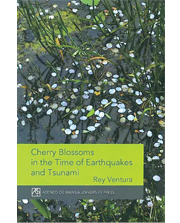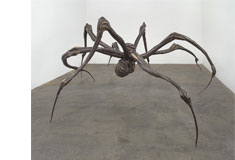Plain Talk
TOKYO NOTICE BOARD NOVEMBER 28. 2025Ocean-like View at Mejiro Garden by Alma Reyes
Tokyo is filled with numerous exquisite traditional gardens flocked by crowds especially during spring and autumn when flower and foliage blooms and light-up illuminations are drooled over.
Hidden within the residential neighborhood of Toshima ward, Mejiro Teien is often missed, perhaps due to its humble size. Nevertheless, it offers equal beauty and special character as the other more popular gardens, and is certainly a worthy visit.
The 5-minute walk from JR Mejiro station or 15-minute walk from JR Ikebukuro station can be quite interesting, passing along old houses, a shrine and small bars and shops.
Established in 1990, Mejiro Teien is known for its 500-square-meter wide and about 1.2-meter deep pond filled with large Japanese colored carps and ducks. The pond depicts the Chisen style garden, which is represented typically by a pond and a spring at the center of the garden. Trees and stones are reflected on the water surface, illuminating a most exhilarating scene. In other gardens of this design, one can find a viewing spot by a boat or a resting area. In the Mejiro Garden, this sitting area is the Hokugaku Ukimido that floats on the water. It is similar to a gazebo and displays Mashiko-yaki decorations above the hexagonal roof to portray red birds. Stopping here to sit on the wooden benches leaves you with a magical experience, just gazing at the awesome garden scenery, which is often compared to the sight of an ocean.
As you walk leisurely up the stone pathways encircling the pond, you would come across the four-meter-high waterfall, gracefully landscaped with rock formations and maple trees towering over. The slippery waterfall is reminiscent of a deep mountain valley where three tons of water are known to flow every minute from an artificial hill.
Further ahead, a trail of huge stone steps crossing the pond leads you to a stone pagoda. From here, you can grasp a scenic view of the �gAkatori-an�h building that is said to represent the symbol of the garden. The architecture is patterned after the traditional Japanese "sukiya" style with a tiled roof from Kitayama cedar of Kyoto. The name of the building was given in 1918, based on the children's literary magazine "Akatori�h founded in Toshima Ward by the writer Miekichi Suzuki, Japanese novelist and author of children's stories.
An addition to the spectacular panorama of the garden is the carefully positioned cone-shaped bamboo yukitsuri shrouded around selected trees. If you stand in front of the Akatori-an building, you can capture a photographic shot of the Christmas-like trees mirrored on the water, sided by charming gradations of gold, orange, red and green, especially in autumn.
On your way out, pause a bit to notice the wooden traditional Japanese Nagayamon gate. Nagaya literally means a long house, where rows of such houses belonged to low status samurai during ancient times. The Nagayamon gate allowed traffic from one side of the structure to the other.
Amidst the concrete jungle of Tokyo�fs cityscape, detouring a bit to a quiet and picturesque traditional garden such as the Mejiro Teien makes for a much needed relaxing break.
Plain Talk
TOKYO NOTICE BOARD TNB Throwback DECEMBER 09. 2022Autumn in Koishikawa Korakuen Gardens by Alma Reyes
As the cold of fall and winter begins to settle in, enchanting reds, oranges and yellows will soon filter through the Japanese scenery. I had the pleasure of exploring one of Tokyo�fs oldest and most breathtaking gardens, Koishikawa Korakuen Gardens, which I could claim as a must-visit for all this autumn.
Yorifusa Tokugawa, founder of the Mito Tokugawa family, built the garden in 1629 in the early Edo period as part of the Tokugawa residence. The design was inspired by Ming Confucian scholar Zhu Shunsui�fs thoughts on the Chinese teaching referring to a warrior who was known to be sad �gbefore the world's sorrows, but achieved happiness after the world's pleasures�h.
Located at the tip of the Koishikawa Plateau and the Kanda Aqueduct, Koishikawa Korakuen is admired for the undulating topography that surrounds the beautifully landscaped ponds, revealing a wide range of plant and flower varieties�\Japanese cornel, Japanese plum, weeping cherry, wisteria, hydrangea, persimmon iris, water lily, pine, Japanese nutmeg, Japanese sycamore, camellia, zelkova, and of course, Japanese maple. I could feel the harmonious flow of these colorful blooms as they paint the overall panorama like a gigantic painting.
The Horai Island (Nakanoshima) floats in the large spring water, and takes the shape of a turtle and a glans head stone called "Tokudaiji stone�h. Approaching one of the garden highlights, the Engetsu Bridge (Moon Bridge), I sensed the carefully balanced arrangement of the greens and sculptural objects. The bridge was said to have been designed by Shunsui himself, and was named as such due to its full moon-like reflection on the water. It is no surprise, therefore, that numerous landscapes in the garden are named after famous places in China. For instance, the Saiko no Tsutsumi was patterned after the West Lake in China. White lotuses were once planted here, and added to the typical representations of Chinese-inspired Japanese gardens.
One can also admire the Chinese Gate and its elaborate wood carvings. As the official entrance gate to Korakuen, it acts as the separation between the main and the inner garden. In autumn, brightly lit maple trees hover splendidly over the wide gate and water lilies floating on the pond.
While strolling around the vast land, one can spot cone-shaped bamboo supports that protect the trees. Called yukitsuri, the Japanese technique for preserving trees and shrubs from heavy snow, they utilize bamboo poles with ropes attached to limbs. They are a common sight in Koishikawa Korakuen, perched on the edge of grass-covered islands. From afar, they resemble Christmas trees when lined up next to each other.
Despite the concrete backdrop of Tokyo Dome and tall office buildings, this sculptural garden provides a restful niche for some quietude and nourishment of the soul.
Website; : https://www.tokyo-park.or.jp/park/format/index030.html#googtrans(en)
Unfinished business
TOKYO NOTICE BOARD MAY 17. 2019Farewell to a Japan Jazz Icon by David Gregory
The messages from all over Japan read aloud during the service helped us realize how widely Koyama-san touched lives and how many like us were feeling something newly missing from our worlds. But, although wonderful and sometimes saddening us, they did not trigger crying. That happened next.
Those first few notes of the "'Round About Midnight" Miles Davis version, the cut Koyama-san always used to open Jazz Tonight, performed by a live piano and trumpet duo up front near the coffin, did it: Instant recognition, recollections, sighs around the room, eyes closed, arms crossed, heads dropped back or down, and tears, at least for me. How many times had we heard, after Miles breathed his somber opening, Koyama-san's low, raspy voice welcoming us into the studio with, "Minna-san, gokigen ikaga desho-ka everybody, how are you feeling?"?and never thought that someday we would hear him ask about us no more?
Koyama-san's widow, whom, like him, had never known me, stood alone at the coffin head and bowed in silence to everyone in turn after they placed flowers around his body as the duo continued with another slow number, the trumpet sounding so strong and crisp and unusual in a memorial service hall. After we placed our flowers, she responded to my hand on her shoulder, a touch just meant to console her, by immediately turning and reaching for me?a total stranger?burying her head in my chest, and breaking down. She needed that hug that everybody sometimes needs. She let go after her respite when she was ready to face the coffin and everyone else again, and returned to her position. Going to Kashiwa in a snowstorm was worth it just for those few moments when I could do something for her.
So our Kashiwa day was both sad and good. But, why did I even want to go a funeral for a man whom I only knew by voice, and who, although linked to jazz, was not even a musician?
Koyama-san and his Jazz Tonight program I listened to since at least the early 2000s. For more than sixteen years, while my life in Japan has been filled with huge uncertainties, he has been here Saturday nights on the radio, reliable, keeping me connected to the world's music and opening my ears to music from Japan I would not know without him. Listening to him always made me feel good, no matter what had happened in my life during the week or what was coming up in the weeks ahead. Koyama-san and Jazz Tonight were my respite. How well can I replace that comfort?
Koyama-san, thank you for helping this foreigner feel good in Japan. Please rest well in jazz heaven.
NHK Radio, thank you for giving Koyama-san a way to connect with us. Please encourage other DJs to continue doing what he did so well.
To Koyama-san's surviving family members: Please care well for yourselves now, and thank you for supporting and sharing Kiyoshi with us.
The Smallest Box by David Gregory
She came over to my table and asked if I remembered her.
“That’s my boyfriend over there.”
Their table hugged a pillar blocking the sunny Tokyo Bay view enjoyed by the other customers that afternoon in Chiba’s AquaRink ice skating facility café.
“Maybe we will marry next year.”
On my way out, I stopped to congratulate the potential groom to be. What I later heard happened with Hiromi and Hiroshi that night at another place also close to the bay sounded so too good to be true that I visited that place to confirm it really happened. It did.
Hiroshi had reserved for the course menu that night at OCEAN TABLE, next to Chiba Port, on the second floor, where tables sat by the huge windows facing Chiba Port Tower and Tokyo Bay. No view-blocking pillars there. And they had a wait, even with their reservation, because it was Christmas Eve, which in Japan matters much more than the following day; the Eve is the year’s couples’ night out, and single women without dates that night can feel their whole year was wasted.
Hiroshi had changed into a suit after skating, and had urged Hiromi, against her protests about overdressing, into a plaid one-piece, raising expectations. They had never come to a place this nice, one requiring reservations. Saizeriya was more their speed: fast faux-Italian, cheap, and everywhere.
The unexpected wait made Hiroshi antsy. He relaxed and all was perfect after they were seated.
They talked. They ate the Christmas Dinner courses. They ignored the soft Christmas background music. They admired the gleaming, golden Christmas Tree rising from the first-floor buffet area through the open center space across from their table. They could see outside the sparkling flashes and half the tree in Port Tower’s Christmas Illumination, and beyond, the lights from the ships on and facilities around Tokyo Bay, appearing almost twinkling. Perfect—but not for Hiromi.
She went to the toilet. Still he had not asked. The day was done. The reservation system only allowed them two hours there. They had been together all day. He had remembered her birthday-just by coincidence, also that day-with a necklace at AquaRink. Nice, but was that all? He had pestered her since early December about what Christmas present she wanted until she had finally exploded with, “Nothing! Don’t you know I just want a proposal?!” And had added she wanted it to be a surprise. Here he had the perfect chance, and he was wasting it.
She could try enjoying what was left of the evening. Dessert was next. At least here was better than Saizeriya….She was still stuck when she returned to the table, and had no chance to do or say anything, anyway. It was his toilet turn.
Their desserts came. Hiromi sat and waited and pondered the future. Outside, the tower stood alone against the dark sky and Tokyo Bay’s inky darkness.
Their desserts waited. Maybe his tooth was bothering him again. Maybe he was just tolerating it to make the night go well. Maybe for her. Maybe she should go to check on him. Wait-maybe she just heard his voice across the room.
No, only Santa Claus, posing for photographs with diners at the far table. He then started circling the room, giving a small present from his big sack at each table. She could check after he was done.
Hiroshi still had not returned to his seat when Santa reached their table. He handed Hiromi a big, red stocking, by far the room’s largest gift, accompanied by a squeaky, “Atari! You’re a lucky one!” Yeah. She set it aside and Santa moved on. What was he still doing in the toilet?
Santa finished his round, returned to Hiromi, and pointed at her unopened stocking with squeaky, “Un! Un!” grunts. The other diners had opened their presents. She forced a smile and said she was waiting for her boyfriend to return. “Un! Un!”
When Hiromi still resisted, Santa took the stocking in his white-gloved hands and opened it himself. Out first came a big, pink box, heart shaped. He opened that and pulled out another heart-shaped box, and then, from inside that, another heart-shaped box. Another smaller, heart-shaped box followed. He removed from that an even smaller heart-shaped box, and thrust it to Hiromi with one more squeaky, “Un!”
Still gone. Well, he’d miss it. Hiromi obeyed Santa this time and opened it, the smallest box in the room …and her mind and face went blank.
After that frozen moment passed, Hiromi looked at Santa. The second shock hit, and more followed. Santa Claus had ripped off his gloves, furry hat, sunglasses, and huge, flowing beard. He took the box from her?she was still speechless?dropped onto one knee, held the open box out and up to her in both stretching hands, and said in a voice loud enough for everyone in the room to hear, “Hiromi-san, boku-to kekkon shite kudasai! Hiromi, please marry me!”
Outside, to anybody looking, Port Tower’s Christmas Illumination still flashed, and the lights on and around Tokyo Bay still appeared almost twinkling. Inside OCEAN TABLE, on the second floor, everything was happening so fast that Hiromi just did not know which was more difficult to believe: Hiroshi and the ring he first tried slipping onto the finger on her right hand, the one he had taken in his before she held out her left hand, or the following PAN! and PAN! PAN! PAN! PAN! PAN! and PAN! PAN! and PAN! explosions ripping and ribbons shooting around the room as diners at the floor’s other tables popped the party crackers they had found with the notes in their presents from Santa Claus.
Copyright © 2018 David L. Gregory All rights reserved.
I Did It! by David Gregory
She had been here before. But, those were tour-guided or hand-held visits. After living most of her life in white-bread suburban USA, driving everywhere, shopping in giant malls and supermarkets, and needing only one currency and one language, my mother ventured out on her own, within and beyond Chiba, during one trip to Japan. From her notes, here are Dorothy's...
ADVENTURES IN JAPAN
Grocery Shopping in Neighborhood�\Walk five blocks...buy only one bag...walk five blocks back. Survived it!
Shopping in City Center�\Walk six blocks to bus stop. Ride bus fifteen minutes. Arrive at stores. Walk around. Look. Decide: cookies.
Buying: �gIkura desu-ka how much?�h Hmm. �gKakimasu kudasai write please.�h
Paying options: give large bill, let clerk figure change, or open change purse, let clerk take out correct amount. Decide to just give some cash.
Clerk shakes her head (�gNO! MORE!�h), then counts out correct amount needed from register and shows me. I mimic her action from my change purse. Smiles! Deep bows with many, �gArigato gozaimasu thank you very much!�h-es.
(My error: thought there was decimal point in Yen price....)
Open cookies, expecting pirouettes with chocolate centers. Instead, peanut butter waffle rolls, no chocolate. No wonder, now I see peanut sketch on package. �gShoganai can�ft be changed,�h I did it to myself. It could have been worse!
~~~
Travelling to Visit Friend�fs Family on Other Side of Chiba�\Walk ten blocks to train. Purchase ticket. Electronic lady on ticket machine screen says, �gArigato gozaimasu�h and bows. Ride train twenty minutes, watching for correct stop, get off, walk seven blocks to house. I did it myself!
Visiting Hisae Overnight�\My Japanese study partner in USA returned to Japan, now lives on other side of Tokyo Bay.
Take large purse and large tote bag with jacket, nightie, toothbrush, cosmetics. Walk six blocks to bus stop. Ride bus to train station. Ride train eighty minutes to Yokohama. Find correct exit from station. EASY. Did not even look at note in pocket explaining route and Japanese signs. And, look! Hisae and three-year old Kei are waiting! �gHello!�h they say! Many hugs!
I did it!
Then, still more travel: train together fifteen minutes, short taxi uphill to lovely apartment, sunny and bright.
Returning to Chiba, just reverse process. Next time, we can meet at a station halfway in between. I can do it.
I can do it!
Copyright (C) 2015 David Gregory. All rights reserved. Chiba, Japan
Book Review
TOKYO NOTICE BOARD MAY 11 2018Cherry Blossoms in the Time of Earthquakes and Tsunami
by Rey Ventura Reviewed by Randy Swank video maker and scriptwriter Rey Ventura won the 2015 National Book Award for his third collection of essays, Cherry Blossoms in the Time of Earthquakes and Tsunami, but for some strange twist of fate you will find very little information on this book. You can�ft even buy it on Amazon. This is a shame because Cherry Blossoms... is a beautiful, insightful and thought-provoking book. |

Cherry Blossoms in the Time of Earthquakes and Tsunami |
In "Miniskirts and Stilettos" we meet Ginto, a young lady who comes to Japan dreaming of making it big as a singer and entertainer but has to deal instead with a much darker reality; while "Mr. Suzuki Tries Again" and "Into the Snow Country" are tragicomic tales of arranged marriages where the dreams and expectations of bride-starved farmers from Japan's Deep North clash with those of young Filipino women who want to escape their poverty and go into marriage "as a girl goes into a convent." Ventura tells these stories with a great eye for detail and manages to find a ray of light even in the darkest corners, or poetry in the midst of a nuclear disaster. The book's first essay is called "The Slow Boat to Manila" and indeed, slowness is the first word that comes to mind when considering Ventura's approach to writing. Everything Ventura does is slow. He is no magazine reporter after all, and will spend days or even months getting to know a person he wants to write about. That's the kind of personal commitment and deep connection with his subject that one feels when reading his essays. |
Tokyo Fab
TOKYO NOTICE BOARD NOVEMBER 28, 2025
SAKANA & JAPAN FESTIVAL
The SAKANA & JAPAN FESTIVAL (���W���p���t�F�X) in Hibiya Park is a paradise for seafood lovers, showcasing gourmet fish dishes from across Japan. Over three days, visitors can enjoy everything from classic seafood rice bowls and hearty fishermen�fs meals to inventive options like seafood ramen and paella�\all prepared with fresh, seasonal ingredients such as tuna, salmon, uni, crab, and scallops.
A key highlight is the �gDiscovery! Fukushima Fish Festival,�h which features premium �gJoban-mono�h seafood from Fukushima along with regional specialties like grilled saury, shellfish rice, and locally brewed sake and wine. Additionally, the �gEat & Support! Japan�fs Seafood Area�h spotlights the rich fishing regions of Hokkaid? and Sanriku, offering dishes that celebrate the bounty of Japan�fs northern seas.
The event also hosts the Fish-1 Grand Prix, where chefs compete using domestically sourced seafood, giving visitors the chance to taste, watch, and vote.
Lively, delicious, and community-minded, the festival goes beyond great food�\it supports Japan�fs fishing regions, promotes healthy fish-based eating, and brings people together to enjoy the country�fs most beloved marine flavors.
Date�FNov 28�|Nov 30, 2025 @ Hibiya Park
https://37sakana.jp/sjfeshibiya/
Belgian Beer Weekend
The Belgian Beer Weekend (BBW) is Tokyo�fs ultimate celebration of Belgian beer, offering visitors a vibrant mix of world-class brews, delicious food, and lively festival energy. In 2025, Hibiya Park will host over 100 authentic Belgian beers, ranging from crisp whites and fruity ales to bold Trappist beers and rich dark varieties, providing a unique opportunity to explore Belgium�fs diverse beer culture in one place.
While admission is free, visitors can purchase a starter set, which includes a branded tasting glass and 13 tokens to sample drinks and food. Culinary offerings are as varied as the beers, featuring Belgian fries (frites), frikandel sausages, hearty roast beef, and decadent waffles topped with chocolate, fruit, or cream�\perfectly paired with the carefully curated brews.
Live music adds to the festive atmosphere, with performances from DJs and artists like Buscemi, Sayo Yoshida, and tajima hal, creating a lively backdrop for mingling and tasting.
Whether you�fre a seasoned beer enthusiast or a first-time visitor, the Belgian Beer Weekend is a fun, social, and immersive festival�\celebrating the flavors, traditions, and spirit of Belgium under Tokyo�fs open sky.
Date�F Dec 3�|Dec 7, 2025 @ Shinjuku Sumitomo Bldg. - Sankaku Hiroba
https://belgianbeerweekend.jp/en/shinjuku/
Have You Been To...
TOKYO NOTICE BOARD NOVEMBER 28, 2025
Higashi Chaya District [Kanazawa, Ishikawa]
Step back in time in Higashi Chaya District, Kanazawa�fs historic geisha quarter. Stroll along streets lined with preserved wooden teahouses, artisan shops, and traditional cafes. Visitors can enjoy gold leaf crafts, local sweets, and glimpses of geisha culture. This charming district perfectly blends history, art, and culture, offering a picturesque escape into Japan�fs Edo-era elegance.
Shosenkyo [Kofu, Yamanashi]
Discover the natural beauty of Shosenkyo Gorge in Yamanashi Prefecture, renowned for its dramatic cliffs, clear streams, and vibrant seasonal foliage. Hike scenic trails, cross suspension bridges, and marvel at the iconic Koboro Falls. Whether visiting in autumn for fiery maple leaves or spring for cherry blossoms, Shosenkyo offers a breathtaking escape into Japan�fs serene mountain landscapes.
Sujiyu Onsen [Yutsubo, Oita]
Relax and unwind at Sujiyu Onsen, a hidden hot spring retreat in Gunma Prefecture. Known for its soothing mineral-rich waters and tranquil atmosphere, this traditional onsen offers a serene escape from city life. Surrounded by nature, visitors can soak in outdoor baths, enjoy seasonal scenery, and experience authentic Japanese bathing culture in a peaceful, restorative setting.
Jozankei Onsen [Sapporo, Hokkaido]
Nestled in the mountains near Sapporo, Jozankei Onsen is a picturesque hot spring town perfect for relaxation and nature lovers. Surrounded by rivers and forests, it offers soothing outdoor and indoor baths, seasonal foliage, and tranquil walks. A visit here combines authentic Japanese onsen culture with stunning scenery, making it an ideal escape from city life.
Tokyo Voice Column
TOKYO NOTICE BOARD TNB Throwback: MARCH 24. 2017
Four seasons at Kyu Furukawa Garden by Olga Kaneda
When it comes to visiting tourist attractions in Japan, timing is everything. Just imagine your disappointment when you finally arrive at the garden or park of your dreams but there is nothing except green trees and shrubbery.
That is not the case if you decide to stop by Kyu Furukawa Garden in Kita-ku, Tokyo. All year round you can appreciate the beauty of roses, peonies, blooming apricot trees, weeping sakura, azalea, irises. The garden is not too big, but it is packed with possibilities to relax and embrace the calm atmosphere of the ancient Somei-mura Village. It exhibits an eclectic mix of Japanese and Western cultures. You can have a tea break at least in two different places within the garden. The first one is an old western-style building built by the famous British architect Josiah Conder. However, drinking a cup of tea or coffee with cake while looking at the rose garden will be possible only in autumn and spring. A guided tour inside the building� is offered three times a day but you need to apply in advance, so it is almost impossible for non-Japanese speakers. The second place is a Japanese tea house.
Perhaps the most romantic time to visit it is Spring Rose Festival in May, especially when the light-up is on. A slightly intoxicating aroma of roses and irises is especially strong when the weather is sunny. At the festival you will be able to buy several kinds of rose-flavored treats. Last year�fs most popular specialty was delicious Chou a` la cre`me with rose ice-cream. The Autumn Rose Festival is held in October and the visiting time is not extended.
Kyu-Furukawa Garden is also a must-see if you are into azaleas. If you choose the date wisely, you will be able to catch up both azaleas and roses (but not the light-up).
���{�Ŋό������ɏo������ہA�d�v�Ȃ̂̓^�C�~���O���B�O�芐���āA�뉀������ɒ��������������A�t���ς����̖�������������A���������������肷�邾�낤�B
�����s�k��ɂ��鋌�Ð�뉀�̂́A���s���Ă��������肳����ꂽ���Ƃ̂Ȃ��뉀���B�P�N���Ԃ̔��������ӏ܂ł���B���[�Y�A�V���N���N�A�A���Y�A��������A�c�c�W�A�A�C���X�B�뉀�͍L���͂Ȃ����A�����Ă̐��䑺�������Ă���������肵�����₩�ȕ��͋C���`����Ă���B�a�m�ܒ��̕����ɐZ���B�뉀���ɂ���ӂ�����{�݂ł��������߂�B�ЂƂ́A�C�M���X�o�g�̌��z�ƁA�W���T�C�A�E�R���h���ɂ��v�ė����ꂽ�m�قɂ���B�������P�[�L�ƈꏏ�ɍg����R�[�q�[�����݂Ȃ���A���[�Y�K�[�f�����y���݂����Ȃ�A�H�Ət�Ɍ��肳���B�m�ق̃K�C�h�c�A�[�͈���ɂR��s���邪�A�\�K�v�Ȃ��߁A���{�ꂪ�b���Ȃ��Ƃނ��������B�ӂ��߂́A�a���̒������B
�T���̃X�v�����O�E���[�Y�E�t�F�X�e�B�o���ɍs���Ɩ��̂悤�ȋC���ɐZ���B���[�Y�ƃA�C���X�̍��肪�ق̂��ɕY���A�V�����ƂȂ����炾�B�t�F�X�e�B�o���J�Î��ɂ́A���[�Y�֘A�̃O�b�Y���w���ł���B��N�D�]�������X�y�V�����e�B�̓��[�Y�A�C�X�N���[���̓������V���[�N���[���������B�H�̃��[�Y�t�F�X�e�B�o���͂P�O���Ŏ��ԉ����͂Ȃ��B
�c�c�W�ɖڂ��Ȃ��Ȃ�A���É͒뉀�͐�ɂ��E�߂��B���܂��K�����I�Ȃ�A�c�c�W�ƃ��[�Y�𗼕��Ƃ��ӏ܂ł���B
MUSEUM -What's Going on?-
TOKYO NOTICE BOARD OCTOBER 10. 2025
Prism of the Real: Making Art in Japan 1989-2010
Prism of the Real presents the work of over 50 artists from Japan and around the world, examining how Japanese art evolved between 1989�\the end of the Sh?wa era�\and 2010, while also highlighting the ways Japanese culture influenced global artistic practice. This twenty-year period, spanning the early Heisei era, witnessed the end of the Cold War and the rise of contemporary globalization, which enabled the freer exchange of people, ideas, and information. Artists responded to these social and cultural shifts, creating works that refracted the currents of their time and raised complex questions about identity, history, and society.

*
Co-curated by The National Art Center, Tokyo and M+, Hong Kong, the exhibition reflects on this transitional era from both national and international perspectives, positioning Japan as a hub of artistic innovation.
The exhibition opens with a prologue exploring the early stirrings of international engagement in the 1980s, before moving into a critical period beginning in 1989, characterized by a surge in creative activity amid dynamic social and political transformations. The works are organized into three thematic sections: The Past Is a Phantom, which addresses war and its lingering social, cultural, and personal effects; Self and Others, exploring identity, gender, and hierarchical structures through art; and A Promise of Community, highlighting projects that foster new forms of connection within existing communities or through newly created social networks.
By juxtaposing multiple histories and contexts, Prism of the Real offers a multifaceted view of Japanese contemporary art as a lens to understand broader global currents.
Period: �| December 8 (Mon), 2025
Venue: The National Art Center, Tokyo
Closed: Tuesdays
Hours: 10:00-18:00 / -20:00 on Fridays and Saturdays (admission 30 minutes before closing)
Admission: Adults 2,000 yen / College Students 1,000 yen / High school students 500yen.
For more information, please visit
https://www.nact.jp/english/exhibition_special/2025/JCAW/
TOP 30th Anniversary Thoughts of a Distant Window:
Contemporary Japanese Photography vol. 22
Since 2002, the Contemporary Japanese Photography series at the Tokyo Photographic Art Museum has been a platform to nurture creativity, explore the potential of photography and moving images, and introduce new artistic practices while highlighting emerging talent. The 22nd edition of this series presents the works of five promising artists who focus on the small, often overlooked stories that arise from our connections with people, places, customs, and the passage of time.
In today�fs world, where embracing diversity and fostering an inclusive society are increasingly important, imagination plays a key role in how we relate to others with different values and experiences. The artists in this exhibition invite viewers to engage with these narratives, reflecting on the subtleties of everyday life.

*
The concept is akin to glimpsing a life through a street-side window. While walking, you might be unexpectedly drawn to a window, sensing something of the life within and imagining a story beyond your immediate view. Similarly, the photographs and moving images in this exhibition act as portals, offering perspectives into unfamiliar landscapes and narratives.
By engaging with the works of these five artists, visitors are encouraged to contemplate distant lives and experiences, cultivating empathy, curiosity, and imagination. The exhibition transforms ordinary moments into windows to broader worlds, allowing viewers to explore new ways of seeing, understanding, and connecting with the world around them.
Period: �| Jan. 7 (Wed), 2026
Venue: TOKYO PHOTOGRAPHIC ART MUSEUM
Closed: Mondays (except Monday National Holidays)
Hours: 10:00 - 18:00 / �| 20:00 on Thursdays and Fridays (admission 30 minutes before closing)
Admission: Adults ��700 / College Students ��560 / High School Students ��350
Strange but True
TOKYO NOTICE BOARD NOVEMBER 28. 2025
Flying Turkey!
In one of Alaska�fs most heartwarming and unusual Thanksgiving traditions, pilot Esther Sanderlin delivers frozen turkeys by air to her off-the-grid neighbors. Each year, Sanderlin loads up her small bush plane with dozens of turkeys and airdrops them over remote communities in Alaska�fs interior�\places unreachable by car once the snow sets in. What began as a small act of kindness has turned into a local spectacle fondly dubbed the �gTurkey Drop.�h Villagers eagerly await the buzzing of her plane, knowing a Thanksgiving feast is literally falling from the sky. Despite the dramatic delivery method, Sanderlin�fs aim is careful and practiced, ensuring the frozen birds land safely for retrieval. Her generosity has drawn national attention and even comparisons to a real-life holiday movie moment. It�fs an unusual yet heartwarming reminder of the creative ways Alaskans stay connected and celebrate gratitude�\no matter how far apart they live.
Apple Pie Mac and Cheese?
A bold Thanksgiving twist has stirred up debate this year: apple-pie-flavored mac and cheese. Launched by a quirky U.S. food startup, this limited-edition dish combines two holiday favorites�\sweet apple pie and creamy macaroni and cheese�\into one unexpected creation. The recipe features cheddar sauce infused with cinnamon, nutmeg, and apple pure�Le, topped with a crunchy pie crust crumble. Food lovers are sharply divided. Some describe it as �gsurprisingly addictive,�h praising the balance of salty and sweet, while others call it �gculinary chaos.�h Social media is buzzing with videos of brave taste-testers either raving�\or gagging�\after a single bite. Despite the controversy, the company behind it reports that the unique comfort food sold out within days, proving that curiosity (and a touch of holiday madness) still drives seasonal food trends. Whether it�fs genius or gastronomic disaster, this bizarre mashup is the talk of this Thanksgiving season.
Links

Guesthouse Tokyo
10 minutes to Ikebukuro.
Interhouse
safe and accessible solution for your accommodation needs in Tokyo.
Sakura House
1830 monthly furnished rooms at 204 locations in Tokyo.
TOKYO ROOM FINDER
Contact our international team that will assist you in finding housing
and overcoming any communication barriers in Japan!
J&F Plaza
Furnished & unfurnished guesthouses and apartments in Tokyo.
May Flower House
Tokyo furnished apartments. Ginza, Roppongi, Yotsuya and more.
TenTen Guesthouse
33,000yen/30 days for working holiday students.
GOOD ROOM TOKYO
Share room, Private room, under 50,000yen

MOVE JAPAN
Private furnished rooms in Tokyo with free internet. Call us first or call us last!
Tokyomove.com
Hassle free moving starts from 6000yen.
Tokyo Helping Hands
Very flexible working hours to effectly help you with moving, deliveries, disposal, storage and more!

AirNet Travel
We'll cut you the best air ticket deals anywhere.
Fun Travel
Discount air travel & package tours 2min from Roppongi Stn.
No.1 Travel
We go the extra mile for you. International air tickets and hotels.
JR Tokai Tours
Top-value travel to Kyoto, Osaka, Nagoya from Tokyo by Shinkansen.

Matsuda Legal Office
All kinds of Visa, Immigration & Naturalization, International Marriage etc.
Futaba Visa Office
Licensed immigration lawyer & certified public tax consultant.

American Pharmacy
English speaking pharmacy since 1950.

Tokyo Skin Clinic
EU-licensed multi lingual doctors.

Tax-free AKKY
Japanese Appliance, Watch, Souvenirs

Tokyo Speed Dating
1st Sat. & 3rd Sun. at Bari n Roppongi ETC.
Tokyo Spontaneous
Picnic, Parties, Language exchange

TMA
Japanese women & Western men.

Tokyo Fab
TOKYO NOTICE BOARD NOVEMBER 28, 2025SAKANA & JAPAN FESTIVAL
The SAKANA & JAPAN FESTIVAL (���W���p���t�F�X) in Hibiya Park is a paradise for seafood lovers, showcasing gourmet fish dishes from across Japan. Over three days, visitors can enjoy everything from classic seafood rice bowls and hearty fishermen�fs meals to inventive options like seafood ramen and paella�\all prepared with fresh, seasonal ingredients such as tuna, salmon, uni, crab, and scallops.
A key highlight is the �gDiscovery! Fukushima Fish Festival,�h which features premium �gJoban-mono�h seafood from Fukushima along with regional specialties like grilled saury, shellfish rice, and locally brewed sake and wine. Additionally, the �gEat & Support! Japan�fs Seafood Area�h spotlights the rich fishing regions of Hokkaid? and Sanriku, offering dishes that celebrate the bounty of Japan�fs northern seas.
The event also hosts the Fish-1 Grand Prix, where chefs compete using domestically sourced seafood, giving visitors the chance to taste, watch, and vote.
Lively, delicious, and community-minded, the festival goes beyond great food�\it supports Japan�fs fishing regions, promotes healthy fish-based eating, and brings people together to enjoy the country�fs most beloved marine flavors.
Date�FNov 28�|Nov 30, 2025 @ Hibiya Park
https://37sakana.jp/sjfeshibiya/
Belgian Beer Weekend
The Belgian Beer Weekend (BBW) is Tokyo�fs ultimate celebration of Belgian beer, offering visitors a vibrant mix of world-class brews, delicious food, and lively festival energy. In 2025, Hibiya Park will host over 100 authentic Belgian beers, ranging from crisp whites and fruity ales to bold Trappist beers and rich dark varieties, providing a unique opportunity to explore Belgium�fs diverse beer culture in one place.
While admission is free, visitors can purchase a starter set, which includes a branded tasting glass and 13 tokens to sample drinks and food. Culinary offerings are as varied as the beers, featuring Belgian fries (frites), frikandel sausages, hearty roast beef, and decadent waffles topped with chocolate, fruit, or cream�\perfectly paired with the carefully curated brews.
Live music adds to the festive atmosphere, with performances from DJs and artists like Buscemi, Sayo Yoshida, and tajima hal, creating a lively backdrop for mingling and tasting.
Whether you�fre a seasoned beer enthusiast or a first-time visitor, the Belgian Beer Weekend is a fun, social, and immersive festival�\celebrating the flavors, traditions, and spirit of Belgium under Tokyo�fs open sky.
Date�F Dec 3�|Dec 7, 2025 @ Shinjuku Sumitomo Bldg. - Sankaku Hiroba
https://belgianbeerweekend.jp/en/shinjuku/
Have You Been To...
TOKYO NOTICE BOARD NOVEMBER 28, 2025Higashi Chaya District [Kanazawa, Ishikawa]
Step back in time in Higashi Chaya District, Kanazawa�fs historic geisha quarter. Stroll along streets lined with preserved wooden teahouses, artisan shops, and traditional cafes. Visitors can enjoy gold leaf crafts, local sweets, and glimpses of geisha culture. This charming district perfectly blends history, art, and culture, offering a picturesque escape into Japan�fs Edo-era elegance.
Shosenkyo [Kofu, Yamanashi]
Discover the natural beauty of Shosenkyo Gorge in Yamanashi Prefecture, renowned for its dramatic cliffs, clear streams, and vibrant seasonal foliage. Hike scenic trails, cross suspension bridges, and marvel at the iconic Koboro Falls. Whether visiting in autumn for fiery maple leaves or spring for cherry blossoms, Shosenkyo offers a breathtaking escape into Japan�fs serene mountain landscapes.
Sujiyu Onsen [Yutsubo, Oita]
Relax and unwind at Sujiyu Onsen, a hidden hot spring retreat in Gunma Prefecture. Known for its soothing mineral-rich waters and tranquil atmosphere, this traditional onsen offers a serene escape from city life. Surrounded by nature, visitors can soak in outdoor baths, enjoy seasonal scenery, and experience authentic Japanese bathing culture in a peaceful, restorative setting.
Jozankei Onsen [Sapporo, Hokkaido]
Nestled in the mountains near Sapporo, Jozankei Onsen is a picturesque hot spring town perfect for relaxation and nature lovers. Surrounded by rivers and forests, it offers soothing outdoor and indoor baths, seasonal foliage, and tranquil walks. A visit here combines authentic Japanese onsen culture with stunning scenery, making it an ideal escape from city life.
Tokyo Voice Column
TOKYO NOTICE BOARD TNB Throwback: MARCH 24. 2017Four seasons at Kyu Furukawa Garden by Olga Kaneda
When it comes to visiting tourist attractions in Japan, timing is everything. Just imagine your disappointment when you finally arrive at the garden or park of your dreams but there is nothing except green trees and shrubbery.
That is not the case if you decide to stop by Kyu Furukawa Garden in Kita-ku, Tokyo. All year round you can appreciate the beauty of roses, peonies, blooming apricot trees, weeping sakura, azalea, irises. The garden is not too big, but it is packed with possibilities to relax and embrace the calm atmosphere of the ancient Somei-mura Village. It exhibits an eclectic mix of Japanese and Western cultures. You can have a tea break at least in two different places within the garden. The first one is an old western-style building built by the famous British architect Josiah Conder. However, drinking a cup of tea or coffee with cake while looking at the rose garden will be possible only in autumn and spring. A guided tour inside the building� is offered three times a day but you need to apply in advance, so it is almost impossible for non-Japanese speakers. The second place is a Japanese tea house.
Perhaps the most romantic time to visit it is Spring Rose Festival in May, especially when the light-up is on. A slightly intoxicating aroma of roses and irises is especially strong when the weather is sunny. At the festival you will be able to buy several kinds of rose-flavored treats. Last year�fs most popular specialty was delicious Chou a` la cre`me with rose ice-cream. The Autumn Rose Festival is held in October and the visiting time is not extended.
Kyu-Furukawa Garden is also a must-see if you are into azaleas. If you choose the date wisely, you will be able to catch up both azaleas and roses (but not the light-up).
���{�Ŋό������ɏo������ہA�d�v�Ȃ̂̓^�C�~���O���B�O�芐���āA�뉀������ɒ��������������A�t���ς����̖�������������A���������������肷�邾�낤�B
�����s�k��ɂ��鋌�Ð�뉀�̂́A���s���Ă��������肳����ꂽ���Ƃ̂Ȃ��뉀���B�P�N���Ԃ̔��������ӏ܂ł���B���[�Y�A�V���N���N�A�A���Y�A��������A�c�c�W�A�A�C���X�B�뉀�͍L���͂Ȃ����A�����Ă̐��䑺�������Ă���������肵�����₩�ȕ��͋C���`����Ă���B�a�m�ܒ��̕����ɐZ���B�뉀���ɂ���ӂ�����{�݂ł��������߂�B�ЂƂ́A�C�M���X�o�g�̌��z�ƁA�W���T�C�A�E�R���h���ɂ��v�ė����ꂽ�m�قɂ���B�������P�[�L�ƈꏏ�ɍg����R�[�q�[�����݂Ȃ���A���[�Y�K�[�f�����y���݂����Ȃ�A�H�Ət�Ɍ��肳���B�m�ق̃K�C�h�c�A�[�͈���ɂR��s���邪�A�\�K�v�Ȃ��߁A���{�ꂪ�b���Ȃ��Ƃނ��������B�ӂ��߂́A�a���̒������B
�T���̃X�v�����O�E���[�Y�E�t�F�X�e�B�o���ɍs���Ɩ��̂悤�ȋC���ɐZ���B���[�Y�ƃA�C���X�̍��肪�ق̂��ɕY���A�V�����ƂȂ����炾�B�t�F�X�e�B�o���J�Î��ɂ́A���[�Y�֘A�̃O�b�Y���w���ł���B��N�D�]�������X�y�V�����e�B�̓��[�Y�A�C�X�N���[���̓������V���[�N���[���������B�H�̃��[�Y�t�F�X�e�B�o���͂P�O���Ŏ��ԉ����͂Ȃ��B
�c�c�W�ɖڂ��Ȃ��Ȃ�A���É͒뉀�͐�ɂ��E�߂��B���܂��K�����I�Ȃ�A�c�c�W�ƃ��[�Y�𗼕��Ƃ��ӏ܂ł���B
MUSEUM -What's Going on?-
TOKYO NOTICE BOARD OCTOBER 10. 2025Prism of the Real: Making Art in Japan 1989-2010 Prism of the Real presents the work of over 50 artists from Japan and around the world, examining how Japanese art evolved between 1989�\the end of the Sh?wa era�\and 2010, while also highlighting the ways Japanese culture influenced global artistic practice. This twenty-year period, spanning the early Heisei era, witnessed the end of the Cold War and the rise of contemporary globalization, which enabled the freer exchange of people, ideas, and information. Artists responded to these social and cultural shifts, creating works that refracted the currents of their time and raised complex questions about identity, history, and society. |
* |
Co-curated by The National Art Center, Tokyo and M+, Hong Kong, the exhibition reflects on this transitional era from both national and international perspectives, positioning Japan as a hub of artistic innovation. |
Period: �| December 8 (Mon), 2025
Venue: The National Art Center, Tokyo
Closed: Tuesdays
Hours: 10:00-18:00 / -20:00 on Fridays and Saturdays (admission 30 minutes before closing)
Admission: Adults 2,000 yen / College Students 1,000 yen / High school students 500yen.
For more information, please visit
https://www.nact.jp/english/exhibition_special/2025/JCAW/
TOP 30th Anniversary Thoughts of a Distant Window: Since 2002, the Contemporary Japanese Photography series at the Tokyo Photographic Art Museum has been a platform to nurture creativity, explore the potential of photography and moving images, and introduce new artistic practices while highlighting emerging talent. The 22nd edition of this series presents the works of five promising artists who focus on the small, often overlooked stories that arise from our connections with people, places, customs, and the passage of time. |
* |
The concept is akin to glimpsing a life through a street-side window. While walking, you might be unexpectedly drawn to a window, sensing something of the life within and imagining a story beyond your immediate view. Similarly, the photographs and moving images in this exhibition act as portals, offering perspectives into unfamiliar landscapes and narratives. |
Period: �| Jan. 7 (Wed), 2026
Venue: TOKYO PHOTOGRAPHIC ART MUSEUM
Closed: Mondays (except Monday National Holidays)
Hours: 10:00 - 18:00 / �| 20:00 on Thursdays and Fridays (admission 30 minutes before closing)
Admission: Adults ��700 / College Students ��560 / High School Students ��350
Strange but True
TOKYO NOTICE BOARD NOVEMBER 28. 2025Flying Turkey!
In one of Alaska�fs most heartwarming and unusual Thanksgiving traditions, pilot Esther Sanderlin delivers frozen turkeys by air to her off-the-grid neighbors. Each year, Sanderlin loads up her small bush plane with dozens of turkeys and airdrops them over remote communities in Alaska�fs interior�\places unreachable by car once the snow sets in. What began as a small act of kindness has turned into a local spectacle fondly dubbed the �gTurkey Drop.�h Villagers eagerly await the buzzing of her plane, knowing a Thanksgiving feast is literally falling from the sky. Despite the dramatic delivery method, Sanderlin�fs aim is careful and practiced, ensuring the frozen birds land safely for retrieval. Her generosity has drawn national attention and even comparisons to a real-life holiday movie moment. It�fs an unusual yet heartwarming reminder of the creative ways Alaskans stay connected and celebrate gratitude�\no matter how far apart they live.
Apple Pie Mac and Cheese?
A bold Thanksgiving twist has stirred up debate this year: apple-pie-flavored mac and cheese. Launched by a quirky U.S. food startup, this limited-edition dish combines two holiday favorites�\sweet apple pie and creamy macaroni and cheese�\into one unexpected creation. The recipe features cheddar sauce infused with cinnamon, nutmeg, and apple pure�Le, topped with a crunchy pie crust crumble. Food lovers are sharply divided. Some describe it as �gsurprisingly addictive,�h praising the balance of salty and sweet, while others call it �gculinary chaos.�h Social media is buzzing with videos of brave taste-testers either raving�\or gagging�\after a single bite. Despite the controversy, the company behind it reports that the unique comfort food sold out within days, proving that curiosity (and a touch of holiday madness) still drives seasonal food trends. Whether it�fs genius or gastronomic disaster, this bizarre mashup is the talk of this Thanksgiving season.
Links
![]()
Guesthouse Tokyo10 minutes to Ikebukuro. Interhousesafe and accessible solution for your accommodation needs in Tokyo. Sakura House1830 monthly furnished rooms at 204 locations in Tokyo. TOKYO ROOM FINDERContact our international team that will assist you in finding housing and overcoming any communication barriers in Japan! |
J&F PlazaFurnished & unfurnished guesthouses and apartments in Tokyo. May Flower HouseTokyo furnished apartments. Ginza, Roppongi, Yotsuya and more. TenTen Guesthouse33,000yen/30 days for working holiday students. GOOD ROOM TOKYOShare room, Private room, under 50,000yen |
![]()
MOVE JAPANPrivate furnished rooms in Tokyo with free internet. Call us first or call us last! Tokyomove.comHassle free moving starts from 6000yen. |
Tokyo Helping HandsVery flexible working hours to effectly help you with moving, deliveries, disposal, storage and more! |
![]()
AirNet TravelWe'll cut you the best air ticket deals anywhere. Fun TravelDiscount air travel & package tours 2min from Roppongi Stn. |
No.1 TravelWe go the extra mile for you. International air tickets and hotels. JR Tokai ToursTop-value travel to Kyoto, Osaka, Nagoya from Tokyo by Shinkansen. |
![]()
Matsuda Legal OfficeAll kinds of Visa, Immigration & Naturalization, International Marriage etc. |
Futaba Visa OfficeLicensed immigration lawyer & certified public tax consultant. |
|
American PharmacyEnglish speaking pharmacy since 1950. |
Tokyo Skin ClinicEU-licensed multi lingual doctors. |
|
Tax-free AKKYJapanese Appliance, Watch, Souvenirs |
Tokyo Speed Dating1st Sat. & 3rd Sun. at Bari n Roppongi ETC. Tokyo SpontaneousPicnic, Parties, Language exchange |
|
TMAJapanese women & Western men. |
|












